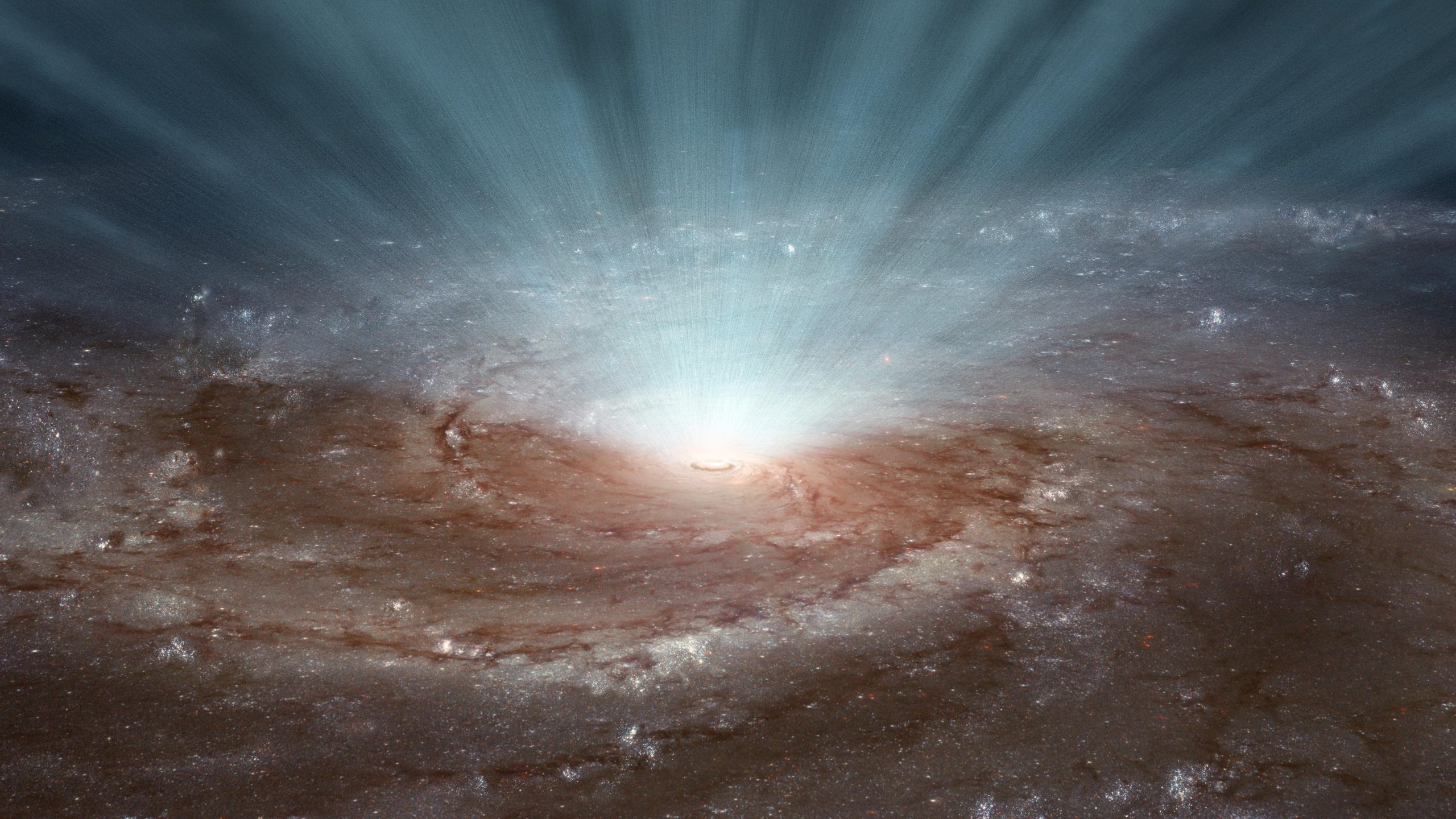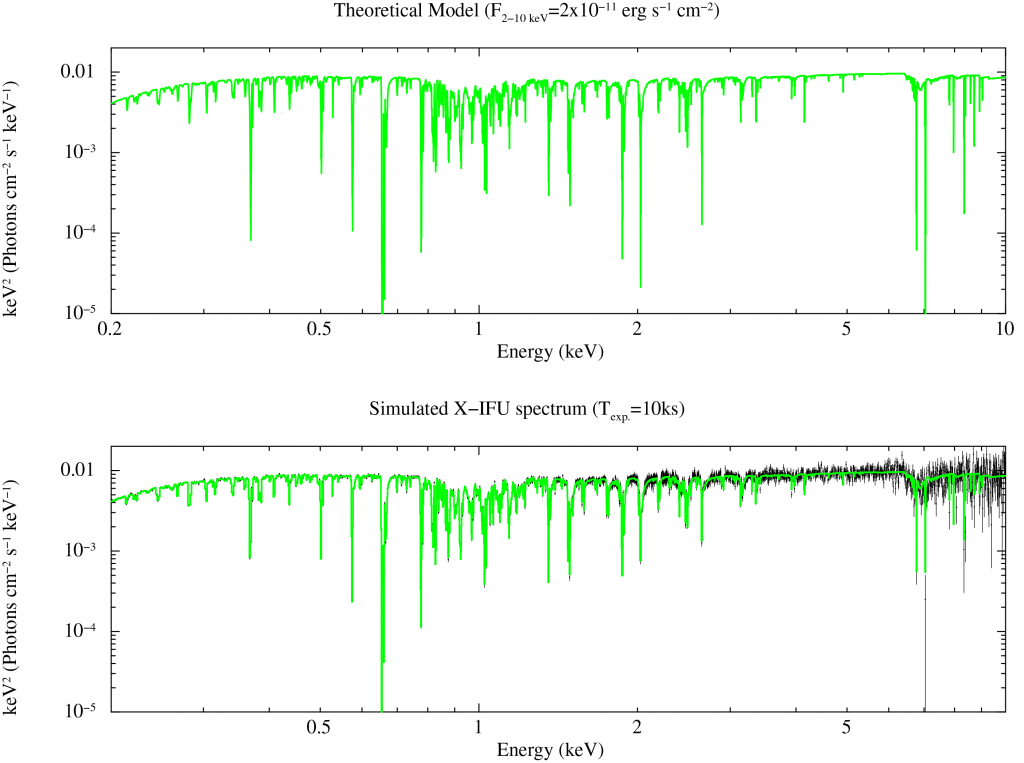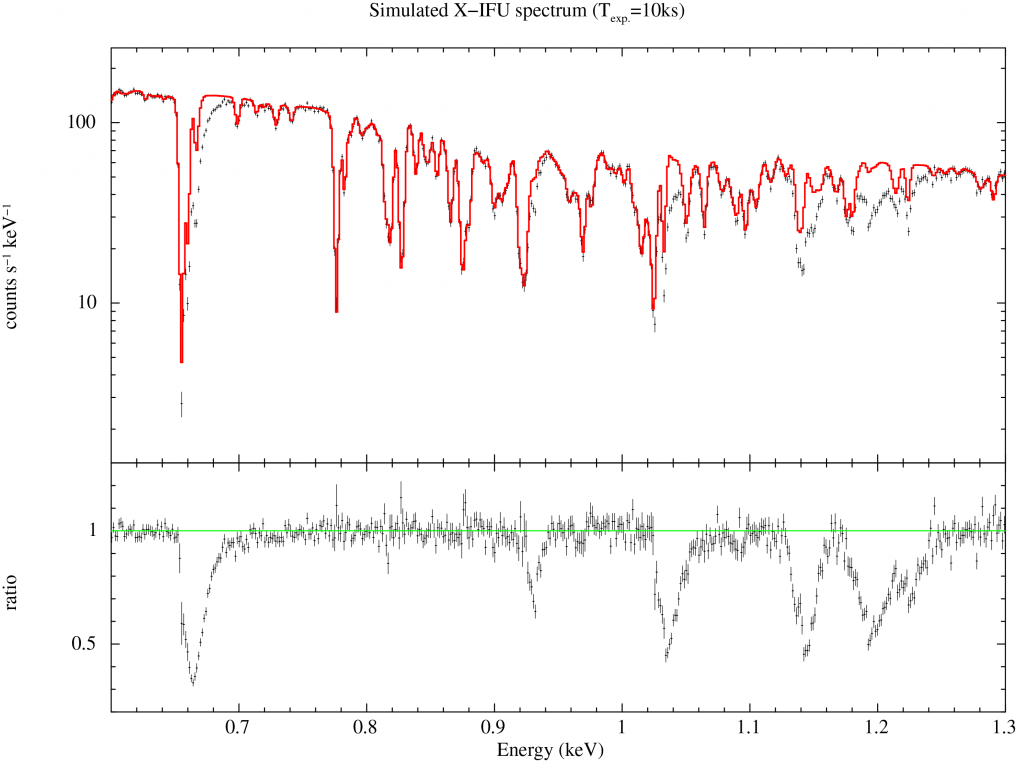
Date.
Image credit © NASA/JPL-Caltech
All the galaxies in the Universe host a supermassive black hole of unknown origin at their center and the mass of the black hole correlates with that of the galaxy bulges. This indicates that the supermassive black holes influenced the galaxy evolution and vice versa. Understanding how this has happened is a major goal of modern astrophysics.
20% of these supermassive black holes accrete matter, forming very bright objects named active galactic nuclei. From the vicinity of the supermassive black holes, they emit X-rays that, thanks to their penetrating power, can probe matter along the line of sight. This allowed astronomers to detect blue shifted and ionized Iron absorption troughs (around 7-10 keV) due to fast outflowing gas in about 40% of nearby active galactic nuclei. In some cases, these “winds” seem able to carry enough energy to sweep away the interstellar dust in the galaxy bulges, thus installing a feedback mechanism able to self-regulate the star formation and the central black holes growth. In other words, they can possibly explain how the supermassive black holes and the galaxies co-evolved across cosmic times.
The X-IFU’s high collecting area over two decades of energies (0.2-12 keV) and its very high spectral resolution (2.5 eV up to 7 keV) will allow us to test this hypothesis by studying the geometry and physical state of the winds via detailed spectral analysis of the associated absorption and emission features. We are thus using toy models to simulate “typical” nearby active galactic nuclei spectra to infer how the X-IFU will map the entire space of the physical parameters of the winds. We are considering ranges of ionization states, and/or velocity, and/or absorbing columns that are inaccessible to the current X-ray telescopes. This information will be crucial to firmly assess the real wind energy injection onto the host galaxies and thus to verify the initial hypothesis.
Moreover, we plan to use theoretical models to test the launching mechanism of the winds. We now think that the radiation pressure due to the extremely high luminosity of active galactic nuclei and/or the high magnetic field originated by the accretion onto the black holes may drive the outflows. These scenarios predict different variability patterns, density, and ionization profiles of the flows and, possibly, different shapes of the emerging absorbing troughs (Fukumura et al. in prep.). We are thus planning to study if and how the X-IFU can be used in disentangling between these two scenarios.
By Mauro Dadina
Researcher at INAF/OAS
Fig.1: Simulated X-IFU spectrum for a “typical” nearby active galactic nucleus. To test the capabilities of the X-IFU to study the fast winds generated in the active galactic nuclei, the intrinsic power-law continuum is here absorbed by four components (the cold column due to our Galaxy, plus three so called warm absorbers often seen in nearby objects) that are “usually” observed with the current X-ray facilities, even if not always at the same time. On top of those, there is also a fast outflowing wind launched via a magnetic field mechanism. All of these components are expected to originate a plethora of absorption lines (see the upper panel for the theoretical model) that are clearly visible in the X-IFU data (see lower panel).
Fig.2: Zoom in of the 0.6-1.3 keV region of the spectrum presented in Fig. 1. In this case, the underlying model does not include the magnetically launched wind (all the other absorbers are still present, see the red model in the upper panel). Asymmetric absorption features due to OVIII, NeX, FeXXIV are clearly visible in the data-to-model ratio (lower panel) that allows highlighting the blue tail of the absorption troughs, one of the possible signatures of this wind launching mechanism (Fukumura et al. in prep.). It is important to note that the X-IFU will allow the systematic use of the soft X-ray band to study these fast winds. This has been possible only in very few objects with current X-ray telescopes.




 Youtube
Youtube